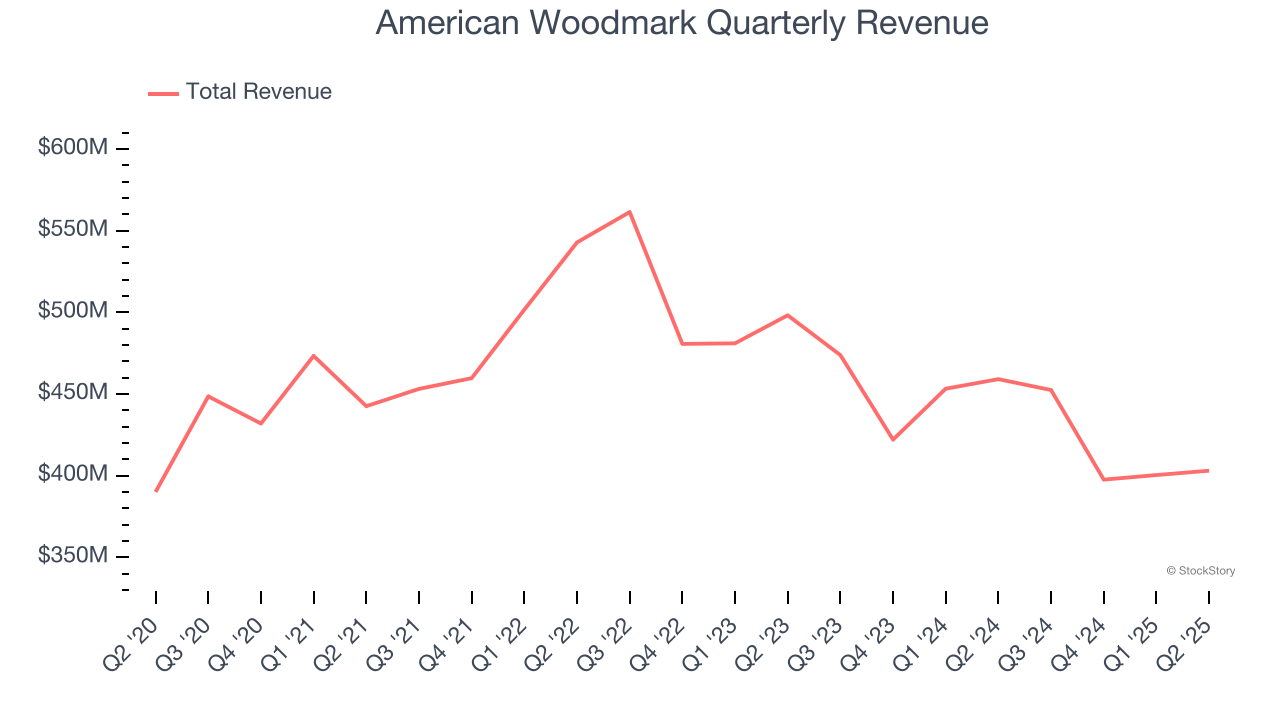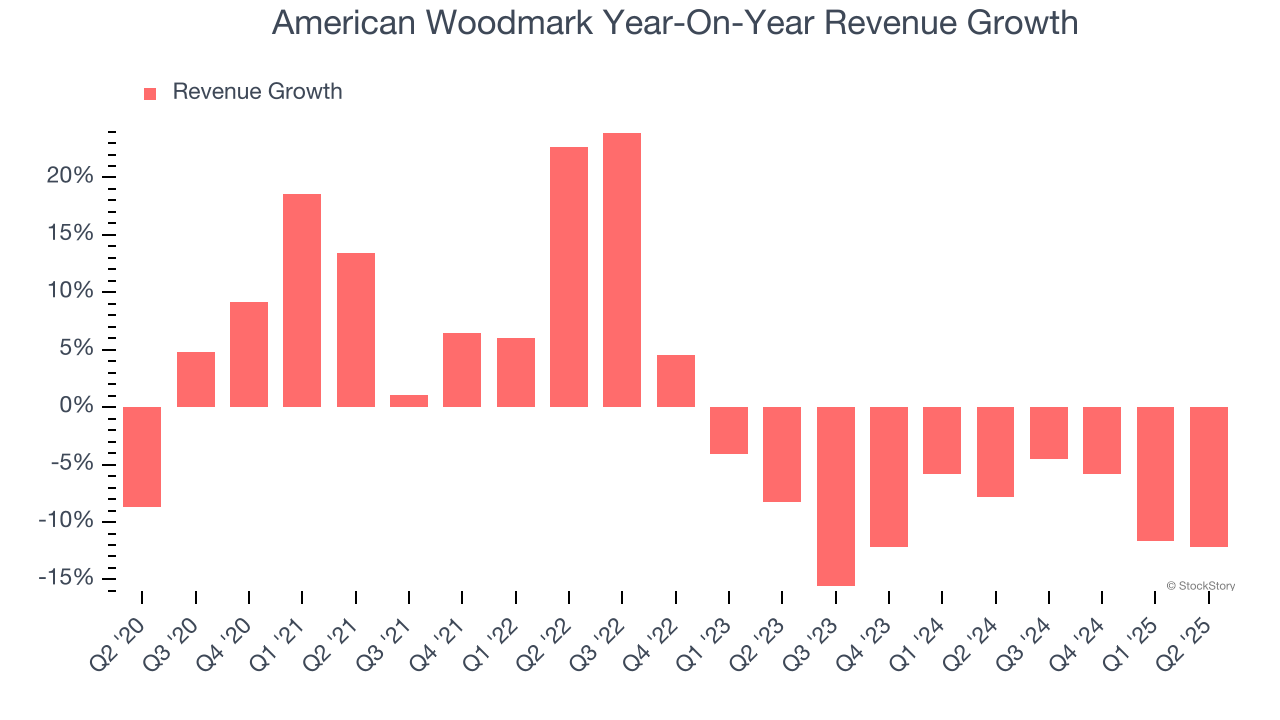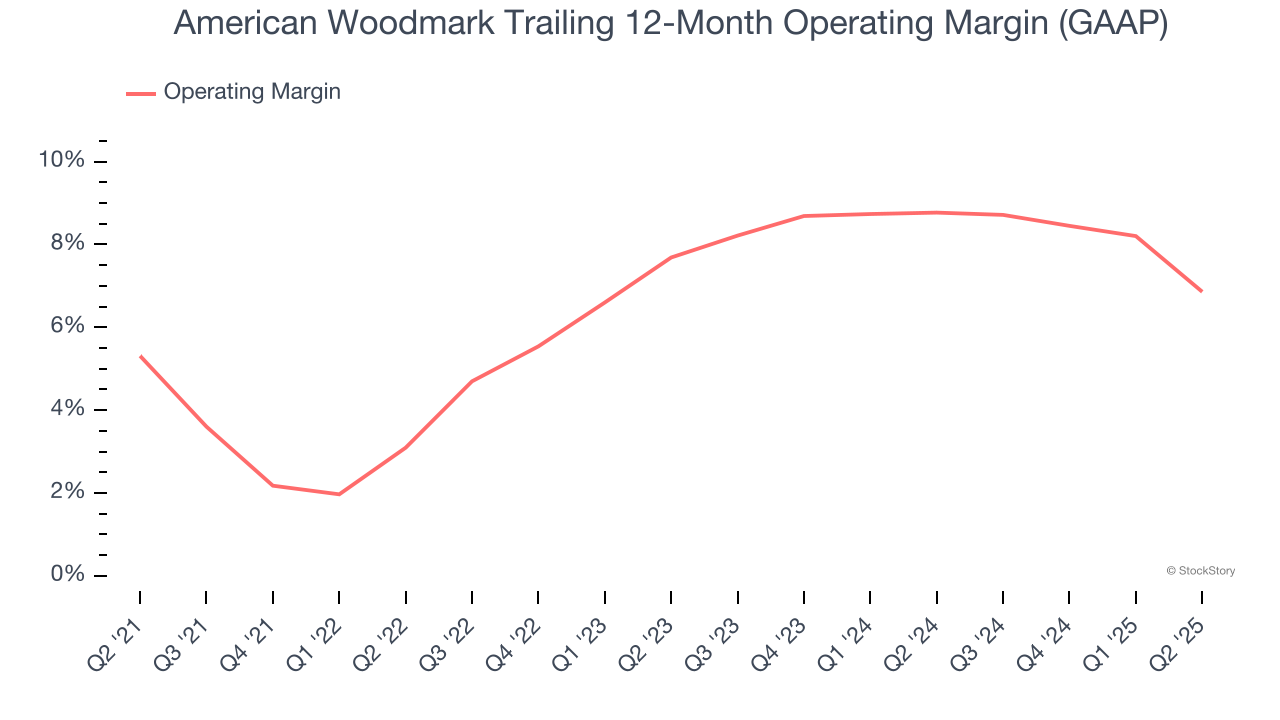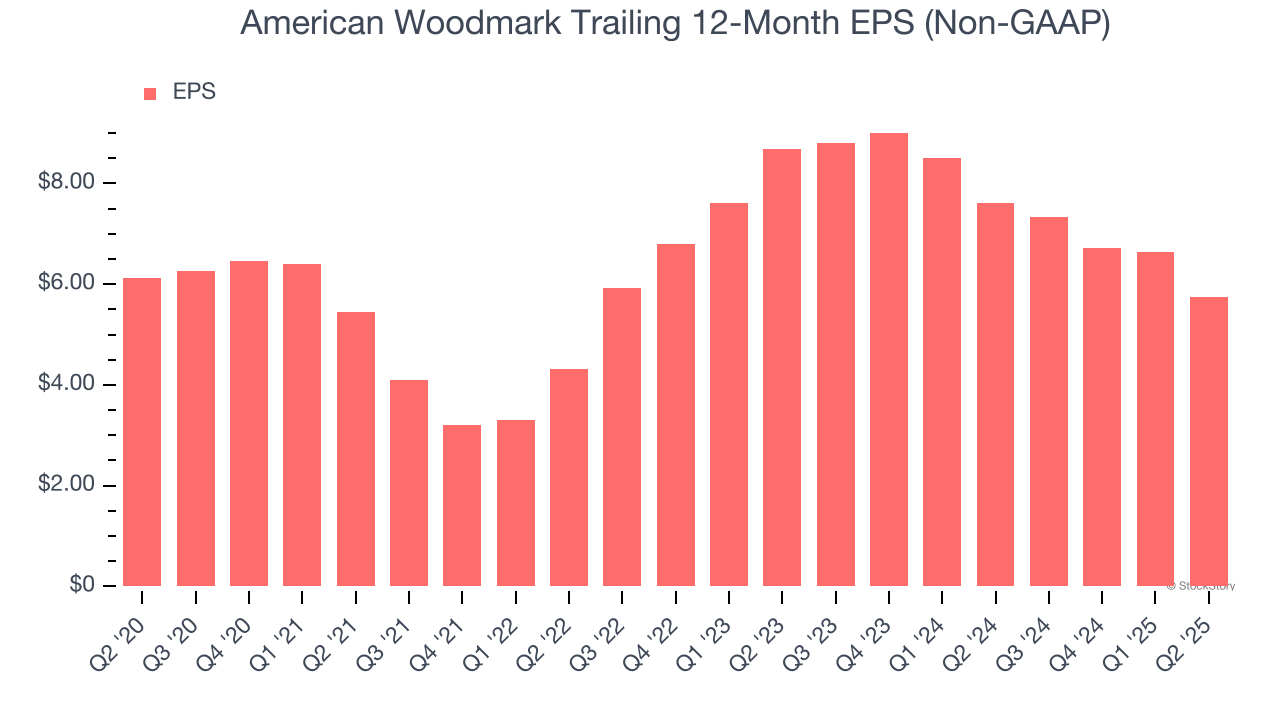
Cabinet manufacturing company American Woodmark (NASDAQ:AMWD) fell short of the market’s revenue expectations in Q2 CY2025, with sales falling 12.2% year on year to $403 million. Its non-GAAP profit of $1.01 per share was 11% below analysts’ consensus estimates.
Is now the time to buy American Woodmark? Find out by accessing our full research report, it’s free.
American Woodmark (AMWD) Q2 CY2025 Highlights:
- Revenue: $403 million vs analyst estimates of $422.2 million (12.2% year-on-year decline, 4.5% miss)
- Adjusted EPS: $1.01 vs analyst expectations of $1.14 (11% miss)
- Adjusted EBITDA: $42.24 million vs analyst estimates of $42.9 million (10.5% margin, 1.6% miss)
- Operating Margin: 5%, down from 10.2% in the same quarter last year
- Free Cash Flow Margin: 10.2%, up from 6.4% in the same quarter last year
- Market Capitalization: $972 million
- AMWD did not provide or update previously issued financial guidance in light of the proposed merger with MasterBrand
“The new construction and remodel market continued to be weaker than expected for the first quarter of fiscal year 2026. Our teams are executing well despite the lower volumes and delivered Adjusted EBITDA margins of 10.5% for the first fiscal quarter,” said Scott Culbreth, President and CEO.
Company Overview
Starting as a small millwork shop, American Woodmark (NASDAQ:AMWD) is a cabinet manufacturing company that helps customers from inspiration to installation.
Revenue Growth
Reviewing a company’s long-term sales performance reveals insights into its quality. Any business can put up a good quarter or two, but many enduring ones grow for years. Unfortunately, American Woodmark struggled to consistently increase demand as its $1.65 billion of sales for the trailing 12 months was close to its revenue five years ago. This wasn’t a great result and suggests it’s a low quality business.

We at StockStory place the most emphasis on long-term growth, but within industrials, a half-decade historical view may miss cycles, industry trends, or a company capitalizing on catalysts such as a new contract win or a successful product line. American Woodmark’s recent performance shows its demand remained suppressed as its revenue has declined by 9.6% annually over the last two years. 
This quarter, American Woodmark missed Wall Street’s estimates and reported a rather uninspiring 12.2% year-on-year revenue decline, generating $403 million of revenue.
Looking ahead, sell-side analysts expect revenue to remain flat over the next 12 months. While this projection indicates its newer products and services will spur better top-line performance, it is still below average for the sector.
Today’s young investors won’t have read the timeless lessons in Gorilla Game: Picking Winners In High Technology because it was written more than 20 years ago when Microsoft and Apple were first establishing their supremacy. But if we apply the same principles, then enterprise software stocks leveraging their own generative AI capabilities may well be the Gorillas of the future. So, in that spirit, we are excited to present our Special Free Report on a profitable, fast-growing enterprise software stock that is already riding the automation wave and looking to catch the generative AI next.
Operating Margin
Operating margin is a key measure of profitability. Think of it as net income - the bottom line - excluding the impact of taxes and interest on debt, which are less connected to business fundamentals.
American Woodmark was profitable over the last five years but held back by its large cost base. Its average operating margin of 6.3% was weak for an industrials business. This result isn’t too surprising given its low gross margin as a starting point.
On the plus side, American Woodmark’s operating margin rose by 1.5 percentage points over the last five years.

This quarter, American Woodmark generated an operating margin profit margin of 5%, down 5.2 percentage points year on year. Since American Woodmark’s operating margin decreased more than its gross margin, we can assume it was less efficient because expenses such as marketing, R&D, and administrative overhead increased.
Earnings Per Share
Revenue trends explain a company’s historical growth, but the long-term change in earnings per share (EPS) points to the profitability of that growth – for example, a company could inflate its sales through excessive spending on advertising and promotions.
Sadly for American Woodmark, its EPS declined by 1.3% annually over the last five years. We tend to steer our readers away from companies with falling revenue and EPS, where diminishing earnings could imply changing secular trends and preferences.If the tide turns unexpectedly, American Woodmark’s low margin of safety could leave its stock price susceptible to large downswings.

Like with revenue, we analyze EPS over a shorter period to see if we are missing a change in the business.
American Woodmark’s two-year annual EPS declines of 18.7% were bad and lower than its two-year revenue losses.
Diving into the nuances of American Woodmark’s earnings can give us a better understanding of its performance. American Woodmark’s operating margin has declined over the last two years. This was the most relevant factor (aside from the revenue impact) behind its lower earnings; interest expenses and taxes can also affect EPS but don’t tell us as much about a company’s fundamentals.
In Q2, American Woodmark reported adjusted EPS of $1.01, down from $1.89 in the same quarter last year. This print missed analysts’ estimates. Over the next 12 months, Wall Street expects American Woodmark’s full-year EPS of $5.75 to shrink by 14%.
Key Takeaways from American Woodmark’s Q2 Results
We struggled to find many positives in these results. Its revenue missed and its EPS fell short of Wall Street’s estimates. Overall, this was a softer quarter. The stock remained flat at $67.02 immediately after reporting.
American Woodmark didn’t show it’s best hand this quarter, but does that create an opportunity to buy the stock right now? What happened in the latest quarter matters, but not as much as longer-term business quality and valuation, when deciding whether to invest in this stock. We cover that in our actionable full research report which you can read here, it’s free.
